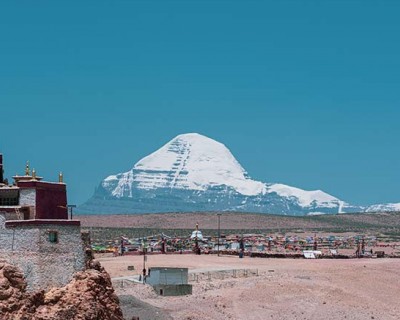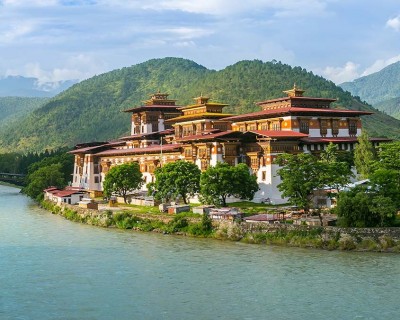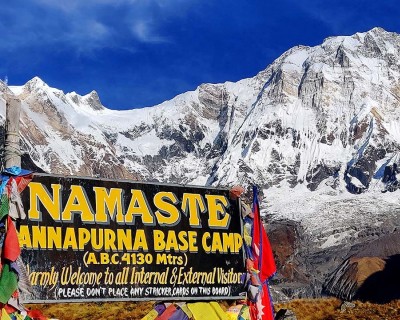Everest Base Camp Trek weather in the high-altitude Himalayan region is one of the best adventures in the country. The spectacular trail is doable throughout the year. However, selecting the best time for the trek is essential. It will add to the level of comfort of your trip and keep you safe.
Moreover, there are no threats, including landslides, avalanches, and other weather-related challenges in these seasons. While there can be some unpredictable weather all year at high altitudes, the frequency is less in peak seasons. Overall, the weather plays a significant part in the success of an incredible trekking journey.
Overall, the Himalayan foothills' scenic terrains and adventurous routes provide a lifetime journey. Read this article in detail to learn more about the Everest Base Camp Trek Weather.
Weather in the Everest Base Camp Region
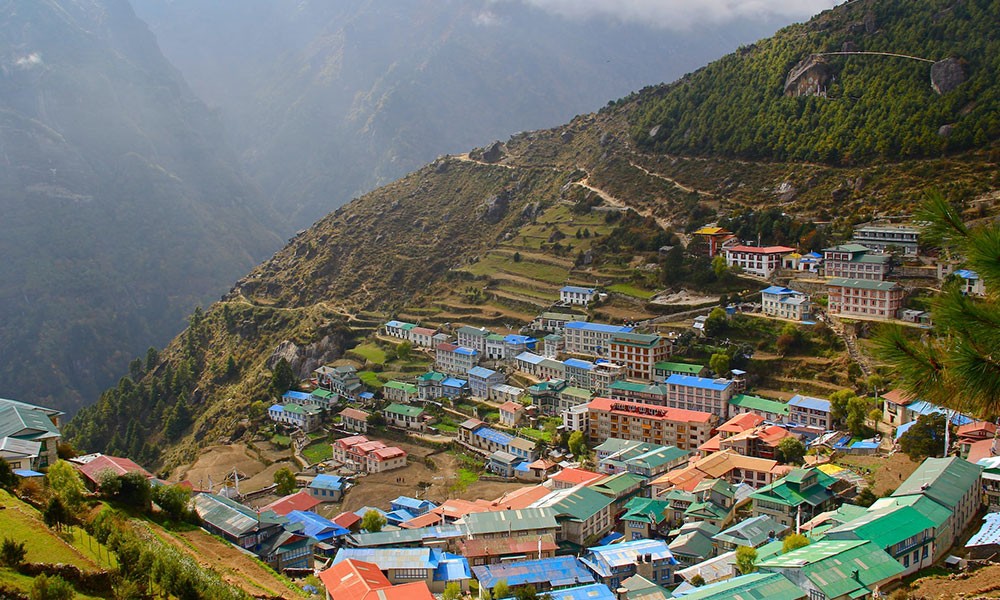
Weather in Spring (March-May)
The Spring season provides you with the best adventure in the Everest region. The trail will lead through the scenic terrains in incredible landscapes this season. The beautiful course gets even more stunning in the Spring season.
The spring season in the country starts in March and lasts till late May. There are moderate temperatures and mild and pleasant conditions throughout the Spring season. The blue sky with the stunning Himalayas makes this trek in the Everest region worthwhile.
The beautiful trail in the serene terrains will not be bothered by any other weather-related challenges. The early part of March is a transition month as you will also experience some effects of winter. You can prepare yourself with proper gear and clothing.
Everest Mahalangur range, including Mount Everest, look stunning on this trek. The weather, with little precipitation and dry temperature, makes the tour beautiful. You will then gently follow through the beautiful terrain while observing the stunning vistas.
The spring season has diverse vegetation blooming along the trails. You can observe the beautiful rhododendron and pine trees which can be exciting for nature lovers. The incredible terrain is a breathtaking and exhilarating experience for all trekkers.
Temperatures in the region in Spring range around 15°C and 25°C from March to May. However, the temperatures will get colder as you move higher along the trail. You will also experience quite a temperature drop after the sun sets and it gets dark.
Besides, various unpredictable weather conditions can occur in the high-altitude region. Hence, although you will get the best weather conditions, you must prepare well for the trek.
See also: Everest Base Camp trek in April | Everest Base Camp Trek in March | Everest Base Camp Trek in May
Weather in Autumn (September-November)

Autumn is another beautiful season for the Everest Base Camp trek. The trek trails will lead you to the region's scenic landscapes. You will get the best weather conditions and climatic environment in this season.
The Autumn season will provide you with incredible scenic landscapes in the region. The temperatures are ideal in the region and provide the best adventure in the daytime, as it is perfect for trekking. You will experience temperatures that range from 10°C to 20°C. The scenic views of the region are another highlight of the trek in the Autumn season.
In this Autumn season, you will trek through the incredible trails without any weather-related challenges. You will observe no rainfall or snowfall in the region. You will need warm clothing as you reach the high-altitude part. Overall, the weather is a safe and comfortable time for the trek.
There are clear views of the snow-clad mountains of the Everest region. You will love trekking in this Autumn atmosphere with a chilly and temperate climate. Trekkers will have a great time in the area as you will experience the fantastic scenery.
Various cultural festivals in the settlements lead to the base camp during this season. You can explore the region, with the beautiful landscapes and interact with the locals. Overall, Everest Base Camp Trek weather in autumn is ideal for trekking.
See more on: Everest Base Camp Trek in October | Everest Base Camp Trek in September
Weather in Monsoon (June-August)
The Everest Base Camp Trek in the offseasons can get quite challenging. You will trek the trails in harsh conditions due to weather-related challenges. The monsoon season remains wet, with hot and humid conditions around the tracks.
The monsoon season in the region can be challenging as the summers also coincide with this season. There is heavy rainfall in the area with wet and humid conditions. You will have a tough time traversing through these terrains in these conditions.
The monsoon season starts in June and then lasts till August. There are heavy rains with slippery and dangerous trails. You will also get the monsoon season with cloudy skies and poor visibility. The heavy rains also lead to mudslides and flooding. The overcast conditions also make the Himalayas covered in the region.
Overall, Everest Base Camp Trek Weather is quite challenging due to these weather conditions in the monsoon season.
Weather in Winter (December-February)
Winter (December to February) is another off-season that makes the journey challenging in the Everest region. You will pass through the scenic terrains and get a unique winter experience. The trails will provide freezing conditions along the route, with heavy snow covering the tracks.
The trails can get challenging with darker and shorter days. The courses will lead you through incredible terrains but with colder temperatures. But there are spectacular snow-clad mountains that you can observe in the region. Some unexpected weather conditions can turn erratic with heavy snowfall, snow storms, etc.
You can wear warm clothes and get warmth through blankets to tackle the harsh cold conditions. You will have to save yourself from frostbite, and freezing conditions as the temperatures in the region can drop to negative 20 degrees.
Besides that, there are fewer trekkers on the trail of this trek. You will also get less number of teahouses, accommodation, and meal facilities. So if you decide to trek in the region, consider these factors.
Best Times for Everest Base Camp Trek
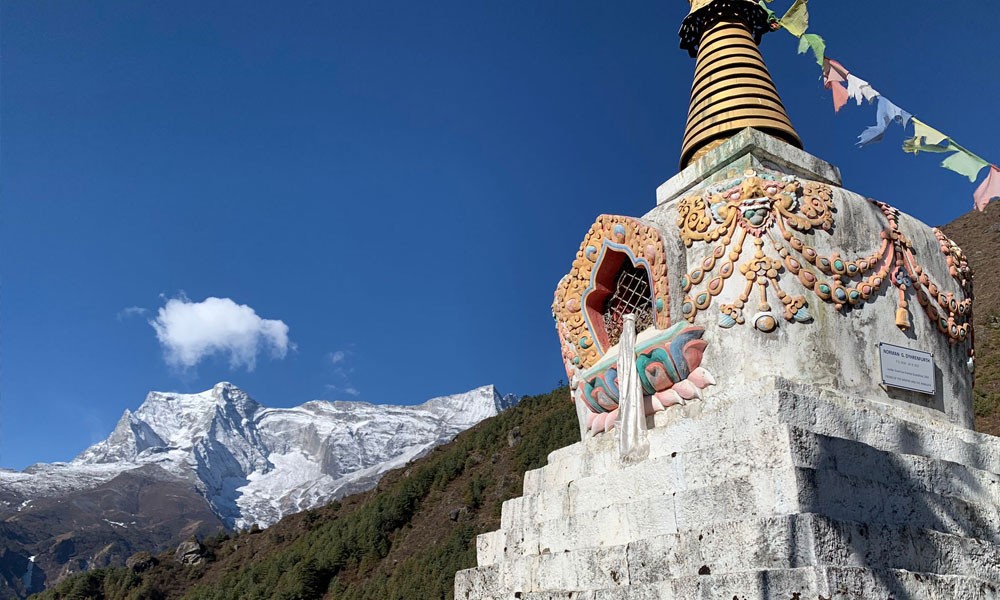
The Everest Base Camp trek is ideal in the Spring season ranges from March to May, and the Autumn season, from September to November. You will pass through the incredible terrains with mild temperatures, clear skies, and pleasant temperatures. The ideal and favorable weather conditions will offer you a comfortable trekking adventure.
You can also trek in the off-season but must travel in the region with proper preparation and training. It would help if you tackled various challenges in the off-season along the trail. These off seasons include the winter (December-February) and summer monsoon (July-August) seasons.
Preparation for the Everest Base Camp Trek Weather
It would help if you made various preparations for completing the EBC trek. The trails will lead you through the incredible terrains, and you must prepare for the spectacular Everest base camp trek through all seasons. The course will pass through demanding terrains that require physical and mental preparation. Some of the aspects of the preparation for the Everest Base Camp trek weather are as follows:
Strength and endurance training
Physical strength is essential for the Everest base camp trek. You will pass through challenging terrains, giving you rugged terrain. You need to train well before the hike to gain proper physical strength.
These training sessions will help you with the challenging steep ascents and descents. You must do aerobic exercise, cycling, strength training, bodyweight exercises, etc.
Gear and equipment
The trekkers must need proper trekking gear and equipment for the Everest Base Camp trek. The trails will lead you through the challenging terrain. Hence, adequate gear and equipment will provide a comfortable and safe hike.
The trek requires waterproof trekking clothing, shoes, and other. You will need warm clothes with layers that are ideal for colder temperatures. You can also get a trekking pole that will provide you with less strain on the terrain. These trekking gear and equipment are available for hire as well.
See more on:- Everest Base Camp Trek Packing List
Acclimatization
Acclimatization will help you immensely along the trail as they provide you safety from altitude sickness. The course will lead you through some of the high altitudes for which acclimatization becomes essential.
You can get the best acclimatization by exploring the beautiful place and adapting to the changing altitude. The trekkers must also hydrate and make gradual ascents along the trail. You can also hike gently in a gentle manner and take necessary Diamox tablets in the area to tackle altitude sickness.
Meals and drinks
Another aspect you need to prepare for the trek includes food and water. Trekkers will need proper nutrition and hydration along the trail. They will need to preserve energy and hydrate you to the beautiful terrain in the trek.
The trail will lead you through the incredible terrain, where you will get proper nutrition in the teahouses. You will also need to carry good snacks and energy bars to help with proper nutrition in the region.
You can get the water from the teahouses and use tablets to purify water for drinking. You can also carry tea and coffee powders for the best benefits along the trail.
Mental preparation
Preparing yourself mentally for the trek is also essential, as it will help you in all conditions throughout the walk. The trail of the tour will lead you through some of the significantly challenging terrains. Therefore, mental preparation will help you immensely along the path.
The path up the trek will be quite challenging due to the weather. Hence, you must set realistic expectations and get the whole adventure along the trails. A positive outlook and mindset will help you immensely along the route.
Weather Difficulties During the Everest Base Camp Trek
.JPG)
Unpredictable weather
The Everest base camp trek will pass through the region at a high altitude. This can get quite challenging due to the unpredictability of the weather. You will find the weather frequently changes in the area. Heavy rains, snow, and others are common in the region. Hence, unpredictable weather is one of the significant difficulties in the region.
Landslides
There are various weather-related mudslides, landslides, avalanches, etc. You will have these challenges in the monsoon season as there are also landslide-prone areas. You will pass through the serene terrains that you must cross with caution.
Muddy and slippery trails
The trails get muddy and slippery in case of heavy rainfall conditions. You will find various challenges in weather conditions that can lead to many injuries. The trekkers trekking, especially in the summer monsoon season, should get proper trekking shoes and gear.
Freezing conditions
The high altitude can get challenging to tackle for all trekkers. Due to the freezing weather conditions, the trek will be pretty tricky. You will pass through various mountain passes and hills along the trail. Temperatures drop in the area significantly, so you should be careful about that aspect. Besides that, you should have proper trekking gear and clothing for the trek.
Altitude sickness at high altitude
Altitude sickness will lead you through the high altitude above 3000m. Various oxygen and air pressures are low in the atmosphere, making the journey challenging. You can take multiple measures to tackle altitude sickness, like acclimatization, hydration, etc. You must rest well and trek gently to tackle altitude sickness along the trail. You can also take Diamox tablets along the path to reduce the symptoms of altitude sickness.
For those considering the more challenging Everest Three High Passes Trek, the risks of altitude sickness are even greater due to the higher elevations encountered. Proper preparation and caution are crucial to safely navigate this demanding route.
Hot and humid conditions
Hot and humid conditions are prevalent along the trail, especially during the summer monsoon. You will need to tackle various challenges in this regard in the low areas. In the daytime, the sun's rays get reflected along the silver mountains, which makes it difficult to trek the day. Hence, it would help if you walked early, before noon, for a comfortable adventure.







